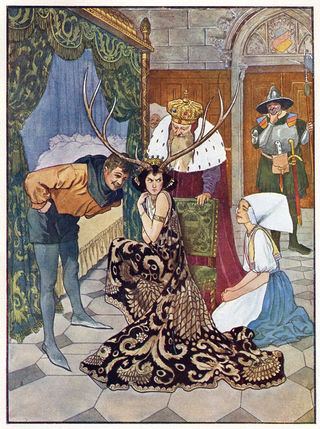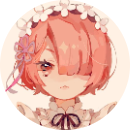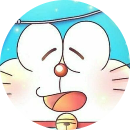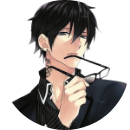1 .Talk about one of your favourite fairy tales / folk tales / legends /tales...

Những câu hỏi liên quan
Talk about your favourite fairy tales.
1)talk about one of your favoutite fales/folk/tales/legend/fables,...bạn nào làm nhanh đúng cho 1 tick
Make notes about one of your favorite fairy tales. You can invent your own story.
One definition of what separates us from other species is our ability to construct narratives from our random thoughts, memories, and imaginings. We are a species of storytellers. How and why we construct stories remains a mystery, one being explored by biologists, anthropologists, psychologists, neuroscientists, and researchers in semiotics and linguistics. One common thread in the research is that stories help us make sense of our lives.
 The Lion and Hunter (c. 1840s) by Grandville (1803-1847)
Source: Public Domain
The Lion and Hunter (c. 1840s) by Grandville (1803-1847)
Source: Public Domain
Brian Boyd, author of On the Origin of Stories: Evolution, Cognition, and Fiction, suggests that we are hard-wired to tell stories. Boyd argues that art, in general, and fiction, in particular, have evolved from cognitive play and serve an evolutionary survival function. Our oldest stories, our myths and fairy tales — the story about the hunter and the stealthy lion, or the one about the fox and his invisible cape — may have determined whether our primordial ancestors lived or died. Over time, these stories have become embedded in the warp and woof of our culture, and while the danger of a humanly cunning lion may no lo nger fit our lifestyle, we get the point. Viewed literally, lions can maim us; taken symbolically, understanding and honoring the ways of an intelligent and powerful predator might help us navigate certain obstacles in our lives.
I’ve recently written several blogs about fairy tales. Fairy tales present simple stories that are still relevant as guides to the archetypal patterns in our unconscious minds. They are also teaching stories and cautionary tales that speak to the mythopoeic in our psyches, that aspect of our minds that think in metaphor and symbol. Like our ancestors who lived closer to nature, and like the cosmologies of many indigenous peoples, we, too, have the capacity to experience a tree as a spirit helper or a demon or a bewitched prince. While the earliest folk tales emerged from peoples who possessed a less sophisticated notion of the world, their repertoire of emotions and the stories they wove around them were not dissimilar to our own. Greed, loneliness, jealousy, sorrow — these continue to be our human burden. Cinderella, Bluebeard, Sleeping Beauty are our contemporaries, their journeys to selfhood or self-destruction familiar to our modern souls.
 Rohata Princezna (Princess with Horns) (1920s) by Artuš Scheiner (1863-1938) from Under Command Of Magic by J. Š. Kubín.
Source: Under Command of/ Magic by J. Š. Kubín (1920s)/Public Domain
Rohata Princezna (Princess with Horns) (1920s) by Artuš Scheiner (1863-1938) from Under Command Of Magic by J. Š. Kubín.
Source: Under Command of/ Magic by J. Š. Kubín (1920s)/Public Domain
One way to more fully experience the wisdom of fairy tales is to write your own. Through objectifying the contents of our unconscious by drawing, sculpting, writing, dancing, we find the healing symbols within. The Red Book is a record of Carl Jung’s own plunge into an almost psychotic state after his break with Sigmund Freud in 1913. Characters from his unconscious welled up in his conscious mind. Methodically, with terror and fortitude, he recorded his dialogues with these characters as if they were flesh and blood and Jung even painted images that illustrated his experiences with them. Jung sometimes feared during this period that he was toppling into a psychotic state, but by working consciously with these figures, he found he was able to hear their wisdom “from the other side.” These encounters later lead to his theory of Active Imagination, which he somewhat describes in this advice to an analysand about working with her dreams.
Đúng 0
Bình luận (0)
Task 3. Make notes about one of your favorite fairy tales. You can invent your own story.
Once upon a time, there was a woodcutter cutting wood in the forest. Suddenly, his axe broke and fell into the lake nearby. He started to cry. A Buddha appeared and promised to help him take the axe back. For the first time, the Buddha jumped into the lake and fished a gold axe. But the woodcutter said it wasn’t his. For the second time, the Buddha fished a silver axe. However, it wasn’t the woodcutter’s axe, too. And for the third time, the Buddha fished a iron axe. The woodcutter cheered and confirmed that was his axe. The Budhha praised him for being honest and gave him all three axes.
Hướng dẫn dịch:Ngày xửa ngày xưa có một anh tiều phu đốn củi ở trong rừng. Đột nhiên lưỡi rìu của anh vì gãy và rơi xuống một chiếc hồ gần đó. Anh ta bắt đầu bật khóc. Bụt hiện lên và hứa sẽ giúp anh ấy lấy lại chiếc rìu. Lần đầu tiên, Bụt nhảy xuống hồ và vớt lên được một lưỡi rìu bằng vàng. Nhưng chàng tiều phu nói đó không phải là rìu của mình. Lần thứ hai, Bụt vớt lên được một lưỡi rìu bằng bạc. Tuy nhiên, nó cũng không phải lưỡi rìu của chàng tiều phu. Lần thứ ba, Bụt vớt lên được một lưỡi rìu bằng sắt. Chàng tiều ohu mừng rỡ và quả quyết đó là lưỡi rìu của anh. Bụt khen chàng trai thật thà và tặng chàng cả ba lưỡi rìu.
Write the questions for the answers.
d)....?
My favourite book is The story of Tam and Cam.
e).......?
My brother likes fairy tales and folk tales.
f)......?
His favourite story is The Golden starfuit Tree.
What is your favorite book ?
What does your brother like?
What is your favorite story?
Đúng 2
Bình luận (0)
What is your favorite book ?
What does your brother like?
What is your favorite story?
Đúng 1
Bình luận (0)
What is your favouwrite book
What does your brother like
What is your favourite story
Đúng 0
Bình luận (0)
Should we encourage children to read legend/ folk tales/ fairy tales/ fable nowadays? Why or why not?
Fairy tales are very good for children because the following reasons :
"If you want your children to be intelligent, read them fairy tales. If you want them to be more intelligent, read them more fairy tales." Albert Einstein
This morning the press, and public, went into uproar over headlines claiming evolutionary biologist and writer Richard Dawkins thinks fairy tales are harmful to children. After a quick look at Dawkins' personal Twitter feed, and his subsequent interview with The Guardian, it seems that his comments have been misunderstood. Nevertheless, in light of the conversation, we look at five reasons why fairy tales are in fact great for children...
1. They boost a child's imagination and cultural literacy
A child's imagination is a powerful and unique thing. It's not only used to make up stories and games, it's a key factor in their creative thoughts and can define the type of education, career and life they have. With this imagination comes a cultural literacy; fairy tales often include different cultures and ways of doing things. They teach children about cultural differences in the world outside their own gifting them a curiosity to learn new things and experience new places.
2. They teach us right from wrong
Standing strongly within fairy tales of magic horses and glass slippers is a moral backbone. It's in a fairytale's DNA to have a strong moral lesson, a fight between good & evil, love and loss, and these lessons rub off on our children.
According to The Telegraph, Mrs Goddard Blythe, director of the Institute for Neuro-Physiological Psychology in Chester, said: "Fairy tales help to teach children an understanding of right and wrong, not through direct teaching, but through implication."
Fairy tales help to teach children an understanding of right and wrong, not through direct teaching, but through implication
Fairy tales teach children that good will always triumph and, while this may not be true in aspects of the real world, the lesson is simple and important. Be the hero, not the villain. Learn to hope for better.
3. They develop critical thinking skills
Following on from the last point, and as Richard Dawkins has pointed out, fairy tales teach children critical thinking. They see the consequences of characters decisions and learn that what will happen to them depends on the choices they make. Not all characters can be good role models, even 'the goodies' can be damsels in distress, or reckless (or feckless) princes. What the stories do teach though, is that when bad things happen, you have decisions to make. If you make the right ones, everything might just turn out OK.
4. They can help children deal with emotions themselves
Not only do fairy tales prepare our kids for society and making moral decisions, they teach them how to deal with conflict within themselves. Child psychologist Bruno Bettelheim, who specialised in the importance of fairy tales in childhood, believed that fairy tales can aid children in dealing with anxiety they are, as yet, unable to explain. In fairy tales children are often the main character and more often than not will win against the story's evil. Readers can relate to this and find a fairy tale hero in themselves. Watch any Pixar film for guidance on this one.
5. And finally, they are great fun!
I have very fond memories of curling up in bed and disappearing into another world where dragons fly and princes fight. My memories of overwhelming excitement when my dad came home with the latest Harry Potter book still makes my smile. The games I played with my friends in our garden were indisputably improved by our imaginations, which were still swimming in last night's story.
Whether it's for indirect moral lessons, improving their imaginations or because your child can't put that book down reading fairy tales should be encouraged. Read them together, help your kids invent their own and make sure they know can win against any wicked witch.
Đúng 0
Bình luận (1)
1) reading / i'm / story / hallowen / a / about / . /
2) reading / the / for / is / she / the crow / and / her / is / room / . /
3) story / what ' s / your / favourite / ? /
4) story / of / are / you / mai an / tiem / the / reading / ? /
5) like / I / tales / fairy / . /
6) tales / like / does / he / fary / ? /
1) I'm reading a story about halloween.
3) What's your favourite story?
4) You reading story are of the Mai An Tiem?
5) I tales fairy.
6) He does tales fairy?
Đúng 0
Bình luận (0)
1. I'm reading a story about hallowen.
2. She reading The fox and the crow in her room.
3. What is your favourite story ?
4. Are you reading The story of Mai An Tiem ?
5. I fairy tales.
6. Does he l i k e fairy tales ?
#goodluck
Đúng 0
Bình luận (0)
1) I'm reading a story about Hallowen
tớ ngu Tiếng Anh lắm
![]()
Đúng 0
Bình luận (0)
Fairy tales are very good for children beacuse of some reasons. Firstly, they boost a childs imagination and cultural literacy. A childs imagation is a powerful and unique thing. Its not only used to make up stories and games, it;s a key factor in their creative thoughts and can define the type of education, career and life they have. Fairy tales often include difference cultures and ways of doing things. They teach children about cultural difference in the world outside. Then, they gift childre...
Đọc tiếp
Fairy tales are very good for children beacuse of some reasons. Firstly, they boost a child's imagination and cultural literacy. A child's imagation is a powerful and unique thing. It's not only used to make up stories and games, it;s a key factor in their creative thoughts and can define the type of education, career and life they have. Fairy tales often include difference cultures and ways of doing things. They teach children about cultural difference in the world outside. Then, they gift children a curiosity to learn new things and experience new places.
Secondly, fairy tales teach children right from wrong. It;s always in a fairytales's DNA to have a strong moral lesson, a fight between good and evil, love and loss, and these lessons rub off on our children. Fairy tales teach children that good persons will always win and, while this may not be true in aspects of the of the real world, the lesson is simple and important. Be the hero, not the villain, Learn to hope for better.
1. How many main advantages of fairy tales are mentioned in the passage?
2. What does the writer say about children's imagination?
3. According to the writer, what do fairy tales often include?
4. What do fairy tales tech children?
5. What does a fairy tale aways have?
Fairy tales are very good for children beacuse of some reasons. Firstly, they boost a child's imagination and cultural literacy. A child's imagation is a powerful and unique thing. It's not only used to make up stories and games, it;s a key factor in their creative thoughts and can define the type of education, career and life they have. Fairy tales often include difference cultures and ways of doing things. They teach children about cultural difference in the world outside. Then, they gift children a curiosity to learn new things and experience new places.
Secondly, fairy tales teach children right from wrong. It;s always in a fairytales's DNA to have a strong moral lesson, a fight between good and evil, love and loss, and these lessons rub off on our children. Fairy tales teach children that good persons will always win and, while this may not be true in aspects of the of the real world, the lesson is simple and important. Be the hero, not the villain, Learn to hope for better.
1. How many main advantages of fairy tales are mentioned in the passage?
2
2. What does the writer say about children's imagination?
A child's imagation is a powerful and unique thing.
3. According to the writer, what do fairy tales often include?
Fairy tales often include difference cultures and ways of doing things
4. What do fairy tales tech children?
Fairy tales teach children that good persons will always win and They teach children about cultural difference in the world outside.
5. What does a fairy tale aways have?
a strong moral lesson
Đúng 0
Bình luận (0)
Fairy tales are very good for children beacuse of some reasons. Firstly, they boost a child's imagination and cultural literacy. A child's imagation is a powerful and unique thing. It's not only used to make up stories and games, it;s a key factor in their creative thoughts and can define the type of education, career and life they have. Fairy tales often include difference cultures and ways of doing things. They teach children about cultural difference in the world outside. Then, they gift children a curiosity to learn new things and experience new places.
Secondly, fairy tales teach children right from wrong. It;s always in a fairytales's DNA to have a strong moral lesson, a fight between good and evil, love and loss, and these lessons rub off on our children. Fairy tales teach children that good persons will always win and, while this may not be true in aspects of the of the real world, the lesson is simple and important. Be the hero, not the villain, Learn to hope for better.
1. How many main advantages of fairy tales are mentioned in the passage?
=> There are twom main advantages of fairy tales are mentioned in the passage
2. What does the writer say about children's imagination?
=> The writer say about a powerful and unique thing
3. According to the writer, what do fairy tales often include?
=> Fairy tales often include difference cultures and ways of doing things.
4. What do fairy tales tech children?
=> They teach children about cultural difference in the world outside. Then, they gift children a curiosity to learn new things and experience new places.
5. What does a fairy tale aways have?
=> A fairy tale always have a strong moral lesson, a fight between good and evil, love and loss, and these lessons rub off on our children.
Đúng 1
Bình luận (0)
1, two
2, A child's imagation is a powerful and unique thing.
3, Fairy tales often include difference cultures and ways of doing things
4, They teach children about cultural difference in the world outside, fairy tales teach children right from wrong
Đúng 0
Bình luận (0)
Xem thêm câu trả lời
TOPIC 4: FOLK TALES
Tell about folk tales :
- what is the name of the story you like most ?
- what the type of the story it is ?
- what are main characters in it ?
- what is the content of the story ?
- I like Chung Cakes, Day Cakes most
- It's a folk tale.
- The main characters are Prince Tiet Lieu, his wife, and Emperor Hung Vuong
- Emperor Hung VUong annouced that the prince who made the most delicious food would become the new emperor. Prince Tiet Lieu and his wife pleased the emperor by creating two types of rice cakes that represented Heaven and Earth. Emperor Hung Vuong made Tiet Lieu the new emperor.
(mình đã dựa vào SGK, bạn có thể tham khảo SGK. Chúc bạn học tốt!)
Đúng 0
Bình luận (3)
There are many folk tales, fables and legends such as: Lac Long Quan And Au Co, Cinderella,... But my favourite story is Chung Cakes, Day Cakes. It's a kind of folk tales. There are three characters in this story: Prince Tiet Lieu, his wife, and Emperor Hung Vuong. The content of the story is emperor Hung Vuong announced that the prince who made the most delicious food would become the new emperor. Prince Tiet Lieu and his wife pleased the emperor by creating two types of rice cakes that represented Heaven and Earth. Emperor Hung Vuong made Tiet Lieu the new emperor.
Chúc bạn học tốt!
Đúng 0
Bình luận (3)


























